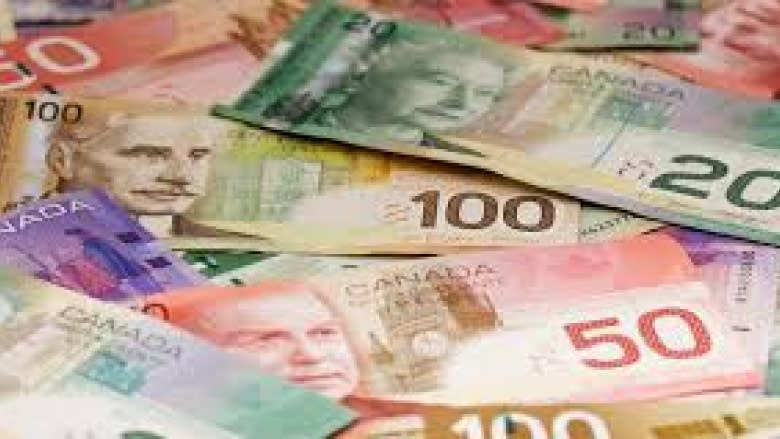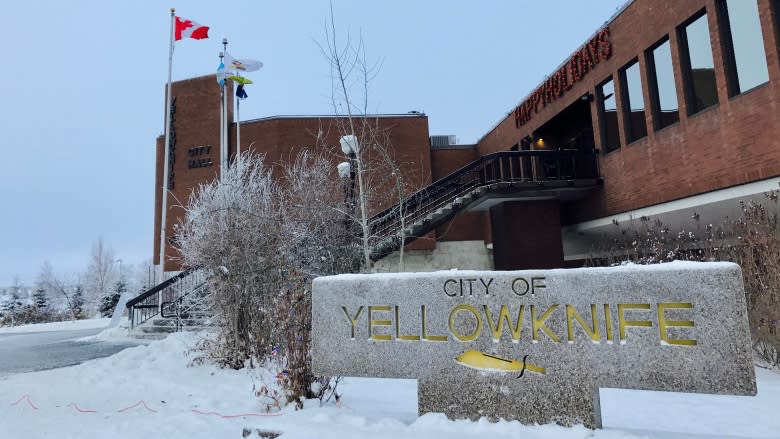High cost of living in Yellowknife and the N.W.T. still going up
Randi Heisler is one of many people who have moved away from the North, where she grew up, because of the high cost of living.
She says working as a hairstylist in Red Deer, Alta., she earns about half what she made in Yellowknife.
"But my bills are paid. I have groceries in the fridge. I've got some money left at the end of the day — and I didn't up there. There wasn't a lot of wiggle room, no savings."
Like many in the North who don't have high-paying government jobs, Heisler had to work at more than one job to get by. In fact, she had three — a veterinary technician, a front desk worker at a Yellowknife hotel and cleaning offices.
It still wasn't enough.
"Things were paid for, but that was about it," she said. "Finally one day I said enough is enough. I took my last cheques, sold everything I could and left."
Constituent's finances vs. government's
During election campaigns in the North — whether federal, territorial or municipal — voters often rate the high cost of living as the first or second issue they want candidates to address. Candidates are typically sympathetic, but once elected, the priority seems to shift from the finances of their constituents to the finances of the governments they become part of.
"The city, like every household, faces inflation," said Yellowknife Mayor Mark Heyck. "So we have to accommodate for that somehow."
"We've made every effort to realize how we can make operational efficiencies, whether it's through cheaper forms of energy or just running our operations more efficiently," Heyck said. "But we do, ultimately, at the end of the day, cover those costs."
Despite those efforts, over the last three years, the city has continued to increase fees for everything from necessities such as garbage and water, to luxuries such as using the pool and other recreational facilities. Those increases are well above the inflation rate.
- From 2014 | Yellowknife cries foul on power rate hike; others cry foul on city
From 2015 to 2017, water fees increased a total of eight per cent, garbage fees went up 10 per cent, and the cost of a one-month family pass to use the Ruth Inch Memorial pool and the Yellowknife Fieldhouse and Multiplex went up six per cent.
The annual rate of inflation in Canada during those years has been well below two per cent.
The increase in user fees has allowed the city to largely avoid the more politically risky alternative of increasing property taxes. During the past three years, property taxes have increased only once, in 2017, by one per cent. Next year, property taxes will rise by just under two per cent.
According to its budget, the city has been doing quite well financially while it has been increasing user fees. From 2015 to 2017, its revenues jumped by $14.4 million or 22 per cent. Revenues from user fees have remained the same during that period.
The city continues to invest heavily in biomass heating systems in an effort to lower its operating costs at some point down the road, once the capital costs have been recouped. The mayor says it's unlikely those savings will result in any future reduction in property taxes or user fees, but says they have reduced the degree to which taxes and fees need to be increased.
"Energy is one component of our cost pressure, but we've got salaries, power, all these other cost pressures as well," said Heyck. "So certainly it has the effect of tempering those cost pressures, but it's only one piece of the puzzle."
Cost of power continues to rise
One of the biggest contributors to the cost of living in the North is the cost of electricity. It's something residents and businesses see on their monthly power bills. It's a cost that contributes to the price of almost every good and service.
The N.W.T. already has the highest cost of electricity in the country. Residents of Alberta pay almost 90 per cent less per kilowatt hour for electricity, according to rates posted on the Alberta Utilities Commission website.
The Northwest Territories Power Corporation has applied to increase its rates by between four and five per cent annually (depending on where you live) the last two years and next year. (In the highly complicated world of utility regulation, rates are sometimes set for past years.) The corporation is not proposing to increase the basic monthly fee all customers are charged.
"We've been trying to protect the ratepayers by having the government provide for renewable and alternative forms of energy," said N.W.T. Premier Bob McLeod.
"We're not passing those costs on to the ratepayer. It's a cost the government has been absorbing, we provide rebates."
Investing in infrastructure
Tolls charged at the Deh Cho Bridge have increased at approximately the rate of inflation this year, and the last two. McLeod says the bridge, which the government initially said would reduce food costs in the city, adds less than one per cent to the cost of food.
- From 2014 | Deh Cho bridge impact impossible to gauge: N.W.T. gov't
"If you compare food costs in Yellowknife to Hay River, Fort Smith, even Edmonton, I think a lot of the food costs are lower than those places," McLeod said. "A large part of it is due to competition in Yellowknife. Bridge costs haven't increased that significantly.
"We find the most effective way to reduce the cost of living is to invest in infrastructure," said McLeod. "We're doing that by investing in roads, airports, even in the winter roads, we're investing in bridges and so on to try to extend the life of the winter roads because they have a significant bearing on the cost of living."
McLeod points out that the Northwest Territories is the only jurisdiction in Canada that's seeing a decline, however slight, in its population and that the main reason for that is the high cost of living.
But even the cost of leaving, at least for those flying out, is going up. This year the government introduced a Yellowknife airport tax that adds an extra $10 per flight south from the city. Those heading north pay an extra $5.
By doing one thing, the federal government has been more effective in addressing the high cost of living than any northern government, at least for tax-paying workers. It increased the northern residents tax deduction from $8.25 to $11 per day starting Jan. 1, 2016.
But another move about to be implemented by Ottawa is about to erode some of that benefit for the fossil fuel intensive North. The carbon tax of $10 per tonne scheduled to be introduced this coming year is expected to add 2.7 cents per litre to the cost of gasoline and 2.7 cents a litre to diesel and increase costs of goods and services provided by businesses that use fossil fuels.
Lower income, but better life
Before leaving Yellowknife, Randi Heisler tried another way to make ends meet. She rented a five-bedroom house and sublet four of the bedrooms. She said it helped, until winter came and monthly $1,000 bills for heating started coming in.
She offers a utility bill as an example of how much lower the cost of living is in her new home compared to Yellowknife. Even with a carbon tax now in effect in Alberta, heat and electricity for her three-bedroom townhouse amounted to just over $200 for a one-month period between January and February.
"It's not just rent and utilities, it's the cost of everything," said Heisler. "The cost of groceries up there compared to down here is outrageous, the cost of cigarettes or beer, dental, healthcare, prescriptions — it's everything."
Heisler says she's glad she made the move to Alberta.





